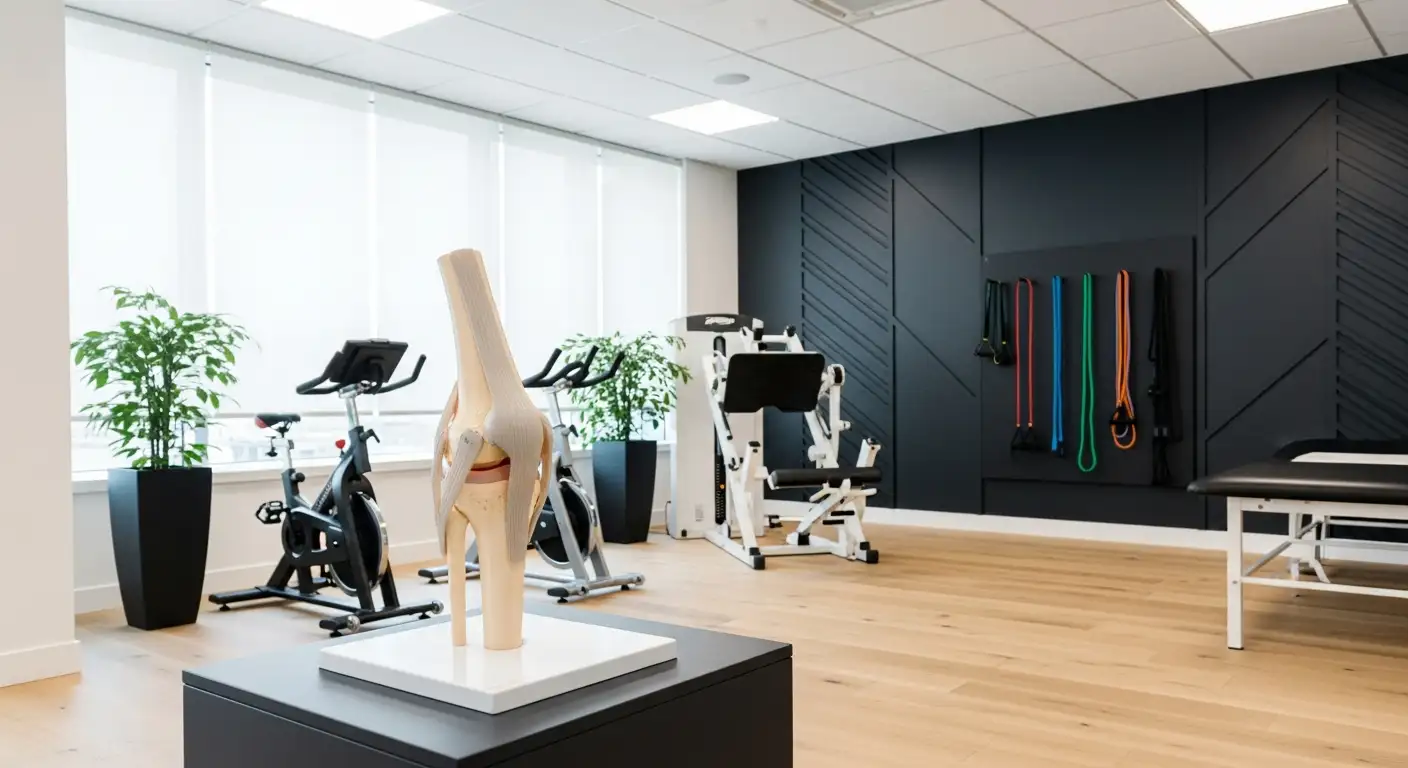Understanding Knee Pain
Knee pain is a common complaint that affects individuals of all ages. It can stem from various causes, some of which might require surgical intervention. Understanding the common causes of knee pain and recognizing the signs of serious knee problems are crucial steps in determining if one might need knee surgery.
Common Causes of Knee Pain
The knee is a complex joint with many components, making it vulnerable to a variety of injuries. Some of the most common causes of knee pain include arthritis, particularly osteoarthritis, ligament sprains, fractures, and dislocations. Arthritis is the most common condition that leads people to require knee replacement surgery. However, individuals with rheumatoid arthritis may also need this surgery in some cases.

Signs of Serious Knee Problems
Persistent knee pain that interferes with your quality of life, limits daily activities, or disturbs your sleep can be a sign of a serious knee problem. Other indications include severe knee pain, stiffness, and swelling that limit your ability to move and perform daily activities like walking, climbing stairs, and getting in and out of chairs. Pain that does not respond to painkillers, inflammation, or swelling can also be signals that surgery might be necessary to address the underlying issue.
An orthopedic surgeon will assess your knee and overall health, and may use X-rays, MRIs, or other imaging tests to evaluate the extent of damage to the knee joint before recommending surgery [2].
Non-surgical Treatments for Knee Pain
Before considering surgery, it's crucial to explore all non-surgical treatments for knee pain. These methods can provide symptomatic relief and may delay the need for surgical intervention.
Physical Therapy and Exercise
When it comes to treating knee pain, physical therapy (PT) and exercises play a pivotal role. Studies have shown that supervised PT, either in a group or individual format, can delay the need for knee surgery in 95% of patients at the end of one year, as cited in NCBI.
Furthermore, PT with Kinesio taping and uphill walking during a PT session can provide better therapeutic effect and functional improvement. Aquatic therapy is another effective approach that can significantly reduce pain and improve physical function, strength, and quality of life (QOL) in patients with knee osteoarthritis (KOA).
Medication and Pain Management
For patients experiencing knee pain, medication and other pain management techniques can provide relief. According to the NCBI, Platelet-rich plasma (PRP) injections have been shown to provide long-term symptomatic relief for KOA compared to hyaluronic acid (HA) and corticosteroid injections.
Along with medication and treatments, lifestyle modifications like weight reduction can significantly improve symptoms associated with KOA. Weight loss of more than 10% has a more significant reduction in compressive forces in the knee joint and improved health-related quality of life (HRQoL).
These non-surgical treatments for knee pain can be effective strategies to manage symptoms and improve functionality. However, if symptoms persist, it's important to consult a healthcare professional to evaluate the need for surgery.
When to Consider Knee Surgery
Making the decision to undergo knee surgery is not one to be taken lightly. It requires careful consideration and discussion with a healthcare provider. This section will delve into the persistent symptoms that indicate the need for surgery and the diagnostic tests used to confirm the same.
Persistent Symptoms Indicating Surgery
Knee replacement surgery is usually recommended for individuals who experience severe knee pain, stiffness, and swelling that limits their ability to perform daily activities like walking, climbing stairs, and getting in and out of chairs. The knee pain may be due to arthritis, injury, or other conditions that have severely damaged the knee, leading to significant pain and loss of function in daily activities.
In most cases, knee surgery is considered after non-surgical methods such as physiotherapy or medication have been unsuccessful in relieving symptoms. Thus, if you've tried a variety of treatments and your pain persists, it might be time to consider the question, "How do I know if I need knee surgery?" [3].
It's essential to discuss the benefits, risks, and potential outcomes of surgery with your healthcare provider to make an informed decision that aligns with your goals and expectations for improving knee function and reducing pain.
Diagnostic Tests for Knee Surgery
An orthopedic surgeon will assess your knee and overall health to determine if knee surgery is the best course of action. This evaluation often involves a thorough physical examination of the knee to assess pain, swelling, range of motion, and strength.
Additionally, imaging tests such as X-rays and MRIs may be used to evaluate the extent of damage to the knee joint. These tests can provide a clearer picture of the knee structure, including the bones, cartilage, and ligaments, and can help identify any abnormalities or injuries that might be causing your knee pain.
The results of these diagnostic tests, combined with your symptoms and medical history, will help your healthcare provider determine whether knee surgery is the right treatment option for you.
While knee surgery can offer significant relief from pain and improved mobility, it's crucial to understand that it involves a considerable commitment to rehabilitation and recovery. Therefore, understanding the signs that indicate a need for surgery and the diagnostic tests involved can help you make an informed decision about your knee health.
Different Types of Knee Surgeries
When non-surgical treatments for knee pain aren't successful, surgical options may be the next step. There are different types of knee surgeries, each serving a specific purpose. Two of the most common are knee replacement surgeries and arthroscopic knee surgeries.
Knee Replacement Surgery
Knee replacement surgery, one of the most common types of arthroplasties, involves removing damaged parts of the knee joint and replacing them with new parts made of materials like metal, ceramic, or plastic. Contrary to its name, this operation does not involve replacing the entire knee joint. This surgery is usually recommended if the knee is severely damaged due to arthritis, injury, or other conditions, leading to significant pain and loss of function in daily activities. It's typically considered when non-surgical methods like physiotherapy or medication have been unsuccessful in relieving symptoms [2].
In the U.S, surgeons perform more than 850,000 knee replacements each year, according to the [4].
Arthroscopic Knee Surgery
Arthroscopic knee surgery is another common type of knee surgery. In this procedure, a surgeon inserts a probe with a small camera (arthroscope) into the knee joint through small incisions. This allows the surgeon to visualize and repair various knee problems. The advantage of this type of surgery is that it helps in diagnosing and treating a wide range of knee issues [4].
Before recommending surgery, an orthopedic surgeon will assess your knee and overall health. They may also use X-rays, MRIs, or other imaging tests to evaluate the extent of damage to the knee joint.
In summary, the decision to opt for knee surgery depends on the severity of the knee issue, the overall health of the individual, and the effectiveness of non-surgical treatments. Knowing the different surgical options available can help individuals make informed decisions about their knee health.
Preparing for Knee Surgery
Before going under the knife for knee surgery, there are several factors and considerations to discuss and evaluate. It's not a decision to take lightly as it involves personal health factors and understanding the potential risks and expectations.
Evaluating Personal Health Factors
Knee surgery, such as knee replacement, is usually recommended if the knee is severely damaged due to arthritis, injury, or other conditions. This damage often leads to significant pain and loss of function in daily activities. It's typically considered after non-surgical methods like physiotherapy or medication have been unsuccessful in relieving symptoms [2].
A study conducted at the Singapore General Hospital between July 2013 and July 2017 involved 4,026 patients aged 50 years and above who underwent unilateral primary Total Knee Arthroplasty (TKA) for knee osteoarthritis. The study highlighted the need for careful consideration of personal health factors, including age, overall health, and the severity of knee damage, before proceeding with surgery.
Discussing Expectations and Risks
The decision to undergo knee surgery is a personal one and requires careful consideration. It is essential to discuss the benefits, risks, and potential outcomes of surgery with your healthcare provider to make an informed decision that aligns with your goals and expectations for improving knee function and reducing pain.
While knee replacement surgery has a high success rate in improving knee function and reducing pain for many individuals, it's also important to note that a significant percentage of patients may not be fully satisfied post-surgery. The NCBI study shows that 11% to 20% of patients were dissatisfied following total knee arthroplasty mainly because of knee motion limitations, knee pain, and functional limitations.
However, with a diligent rehabilitation and physiotherapy program post-surgery, many patients can achieve their expected outcomes and regain mobility in the knee joint.
Before making a decision, discuss these factors with your healthcare provider:
- Your overall health status and any co-existing health conditions
- The severity of your knee pain and the extent of damage to your knee
- The potential risks and complications of knee surgery
- The expected outcomes of the surgery and the potential for improvement in your knee function and pain
- The necessity and timeline of a postoperative rehabilitation program
By thoroughly preparing for knee surgery, you can make an informed decision about the procedure and set realistic expectations for the recovery process. This preparation is a crucial step in your journey to regain mobility and reduce pain in your knee.
Post-surgery Outlook and Rehabilitation
After undergoing knee surgery, it's crucial to understand the recovery process and the importance of rehabilitation to regain mobility and ensure the success of the procedure.
Recovery Timeline
The recovery timeline from a knee replacement surgery can vary significantly based on individual factors such as age and overall health. Generally, it takes about a year to fully recover, with most individuals able to resume usual activities six weeks post-surgery [6].
It's worth noting that knee replacement outcomes are generally positive, with most people experiencing improved mobility and relief from pain after the procedure. Knee replacements are expected to last at least 15 years, with some lasting 20 years or longer.
Importance of Physiotherapy
Following the recommended post-surgery rehabilitation and physiotherapy program is crucial for achieving the best outcomes and regaining mobility in the knee joint. Physiotherapy typically includes a series of exercises designed to strengthen the muscles around the knee and improve flexibility.
A study conducted at Singapore General Hospital involving 4,026 patients who underwent knee replacement surgery for knee osteoarthritis showed the significant role of rehabilitation in successful recovery.
Rehabilitation can be a challenging process, but it is a critical step in achieving the best outcomes following knee surgery. It's important to work closely with your healthcare team and follow their instructions to ensure you recover fully and efficiently.
Factors Affecting Surgery Outcomes
Understanding the factors that influence the outcomes of knee surgery is crucial for both patient and surgeon. These factors can be broadly categorized into preoperative conditions and postoperative care and rehabilitation.
Preoperative Conditions
Preoperative conditions, including a patient's health status, lifestyle, and the severity of their knee condition, significantly influence postoperative outcomes after total knee arthroplasty (TKA) [5]. Age, sex, race, education level, diabetes mellitus, preoperative use of gait aids, contralateral knee pain, and psychological distress are identified as significant predictors for post-TKA outcomes.
The model c-indices, which represent the probabilities to correctly discriminate between two patients with different levels of follow-up TKA outcomes, were 0.71 for knee extension, 0.79 for knee flexion range of motion, 0.65 for knee pain rated on a 5-point scale, and 0.76 for self-reported maximum walk time at 6 months post TKA.
Postoperative Care and Rehabilitation
The quality of postoperative care and rehabilitation also plays a crucial role in the success of knee surgery. Some 11% to 20% of patients report dissatisfaction following total knee arthroplasty (TKA) mainly because of knee motion limitations, knee pain, and functional limitations. Identifying patients at risk for poor post-TKA outcomes can help direct resources towards preventive care, and providing preoperative individualized information on expected outcomes can improve patient satisfaction.
About 5% to 20% of patients had a flexion contracture ³ 10°, range of motion < 90°, moderate to severe knee pain, or a maximum walk time £ 15 minutes at 6 months post total knee arthroplasty (TKA) [5]. These factors underscore the importance of consistent and supervised rehabilitation for optimal recovery.
In considering the longevity of knee replacements, they are expected to last at least 15 years, with some lasting 20 years or longer. The decision between surgery and alternative pain management options is influenced by factors like age, as knee replacements are not permanent solutions.
Together, these factors contribute to the overall success of knee surgery. Understanding and considering them can help patients and healthcare providers make informed decisions about managing knee pain and whether surgery is the best option.
References
[1]: https://orthoinfo.aaos.org/en/diseases--conditions/common-knee-injuries/
[2]: https://www.nhsinform.scot/tests-and-treatments/surgical-procedures/knee-replacement/
[3]: https://www.mayoclinic.org/tests-procedures/knee-replacement/about/pac-20385276
[4]: https://www.asahq.org/madeforthismoment/preparing-for-surgery/procedures/knee-surgery/
[5]: https://www.ncbi.nlm.nih.gov/pmc/articles/PMC6461070/
[6]: https://my.clevelandclinic.org/health/treatments/8512-knee-replacement




